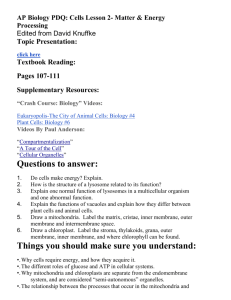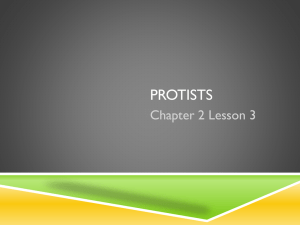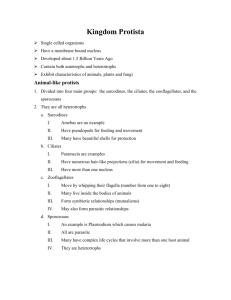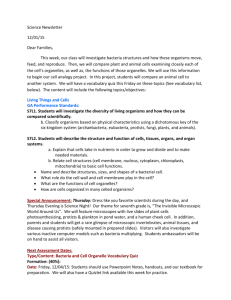Domain Chart
advertisement
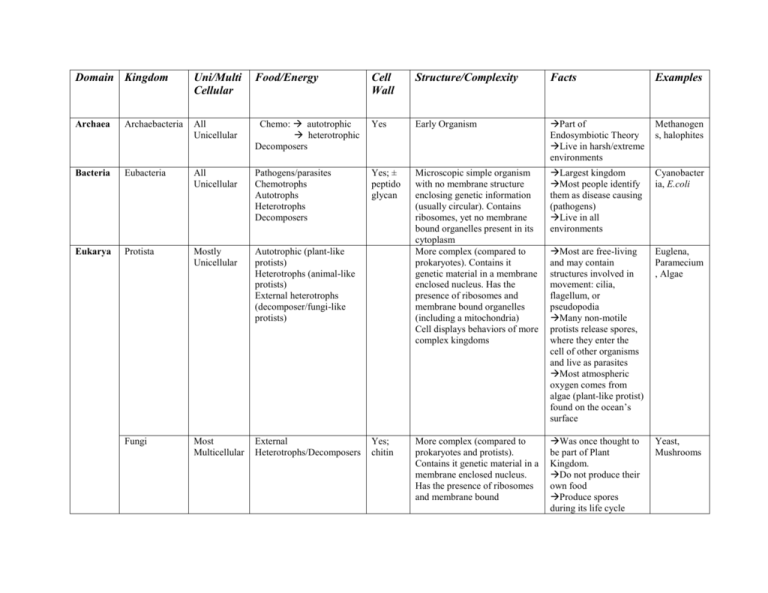
Domain Kingdom Uni/Multi Cellular Food/Energy Cell Wall Structure/Complexity Facts Examples Archaea Archaebacteria All Unicellular Chemo: autotrophic heterotrophic Decomposers Yes Early Organism Part of Endosymbiotic Theory Live in harsh/extreme environments Methanogen s, halophites Bacteria Eubacteria All Unicellular Pathogens/parasites Chemotrophs Autotrophs Heterotrophs Decomposers Yes; ± peptido glycan Largest kingdom Most people identify them as disease causing (pathogens) Live in all environments Cyanobacter ia, E.coli Eukarya Protista Mostly Unicellular Autotrophic (plant-like protists) Heterotrophs (animal-like protists) External heterotrophs (decomposer/fungi-like protists) Microscopic simple organism with no membrane structure enclosing genetic information (usually circular). Contains ribosomes, yet no membrane bound organelles present in its cytoplasm More complex (compared to prokaryotes). Contains it genetic material in a membrane enclosed nucleus. Has the presence of ribosomes and membrane bound organelles (including a mitochondria) Cell displays behaviors of more complex kingdoms Most are free-living and may contain structures involved in movement: cilia, flagellum, or pseudopodia Many non-motile protists release spores, where they enter the cell of other organisms and live as parasites Most atmospheric oxygen comes from algae (plant-like protist) found on the ocean’s surface Euglena, Paramecium , Algae Fungi Most Multicellular External Heterotrophs/Decomposers More complex (compared to prokaryotes and protists). Contains it genetic material in a membrane enclosed nucleus. Has the presence of ribosomes and membrane bound Was once thought to be part of Plant Kingdom. Do not produce their own food Produce spores during its life cycle Yeast, Mushrooms Yes; chitin Plantae All Multicellular Photoautotrophs Yes; cellulos e Animalia All Multicellular Internal Heterotrophs No organelles (including a mitochondria). Does not digest food, rather than releases toxins through cell walls to break down/decompose materials and absorb nutrients through their environment. Structures include hyphae, mycelium, and fruiting bodies More complex organisms that uses levels of organization. Include a range of complex structures. Develop tissues and organs Contain chloroplasts (photosynthetic organelles that contain chlorophyll) and are characterized as containing a large central vacuole (mainly composed of water and aids in cells rigid structure/increases cell volume). Mitochondria is also present. More complex organisms (overall) when compared to other kingdoms. Use levels of organization Cells tissues organs organ systems Defined with presence of mitochondria (involved in energy production) and the presence of centrioles (apparent during cell division) Distinctive sexual life cycle (alteration of generations) known as the sporophyte plant and gametophyte plant. Vascular plants contain complex structures such as stomas (involved in gas exchange) as well as the xylem and the phloem (involved in transport of nutrients and water) Grass, Trees, Flowers Majority consists of invertebrates (lack a backbone) Snakes, Squirrels Lions, Fish, Gorillas, Humans




